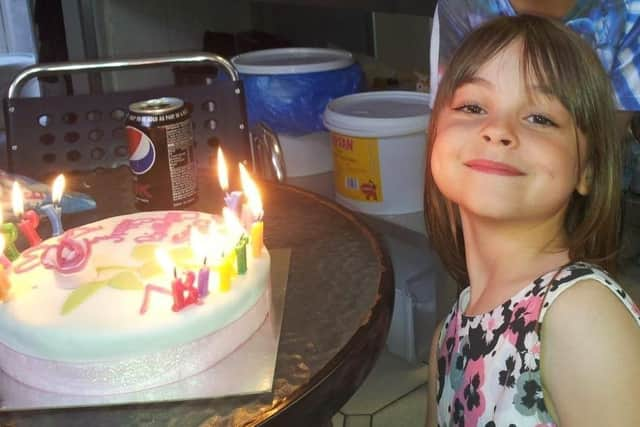Manchester Arena Inquiry: Surgeon defends decision not to operate on youngest terror attack victim - eight-year-old Saffie-Rose Roussos
and live on Freeview channel 276
Experts commissioned by lawyers for the family of Leyland's Saffie-Rose Roussos said a thoracotomy should have been undertaken at Royal Manchester Children’s Hospital where the eight-year-old was taken after the suicide bombing on May 22 2017.
Saffie-Rose suffered significant blood loss from very severe injuries to her legs in the blast from Salman Abedi’s device, which was packed with nuts and bolts.
Advertisement
Hide AdAdvertisement
Hide AdThe inquiry heard on Wednesday that a post-mortem examination concluded the cause of her death was multiple injuries.


Distressing details of the individual area sites of injury across her body – totalling 69 – were outlined at Manchester Magistrates’ Court but not broadcast on the inquiry’s YouTube channel.
This week, the public inquiry into the atrocity, which killed 22 people and injured hundreds of others, is focusing on whether Saffie-Rose, from Leyland, Lancashire, may have survived if she had received different or additional treatment.
The youngster was said to have earlier enjoyed the “night of her life” at the Ariana Grande concert with her mother, Lisa, and elder sister, Ashlee Bromwich.
Advertisement
Hide AdAdvertisement
Hide AdShe arrived at hospital 52 minutes after the explosion as a T-shirt seller, an off-duty nurse and two police officers carried her out of the City Room foyer of the venue on a bloodied advertising board and then had to flag down an ambulance.
Consultant paediatric surgeon Dr Paul Farrelly said she presented as “very pale and waxy-looking”, with no obvious signs of life and he did not see any blood around her.
Chest compressions were performed, a breathing tube was inserted, and he made small incisions into her chest wall but no “sudden gust of air, or blood, came out”, he said.
Finally, a thoracotomy – a larger cut across the chest to confirm if there is a collection of blood around the heart – was considered, but he and a colleague, paediatric consultant Rachel Jenner, agreed against it and Saffie-Rose was pronounced dead at 11.40pm.
Advertisement
Hide AdAdvertisement
Hide AdDr Farrelly said: “We did have a brief conversation about whether a thoracotomy was indicated or likely to be helpful and we came to the conclusion that it was not.
“We had not identified an obvious penetrating injury to the chest that would have made us believe that we should have gone on to do it.”
He said survivors from the procedure in similar situations tended to have isolated gunshot or stab wounds to the chest which were easily identifiable and manageable within a very short period of time.
A thoracotomy is not life-saving in itself and is a temporary measure in resuscitating a patient before moving on to repair an issue, he continued.
Advertisement
Hide AdAdvertisement
Hide AdDr Farrelly added: “We would have been operating blind. We would have been trying to identify injuries as we went along without full knowledge of what other injuries existed and whether we were dealing with the most significant, most lethal injury first, or whether there could have been any injury that we were completely unaware of that could have been contributing to her cardiac arrest.”
He said he stood by the decision he made on the night.
Dr Jenner said she had been unable to find any successful case of thoracotomy in the treatment of child with multiple injures like Saffie-Rose.
Comment Guidelines
National World encourages reader discussion on our stories. User feedback, insights and back-and-forth exchanges add a rich layer of context to reporting. Please review our Community Guidelines before commenting.
